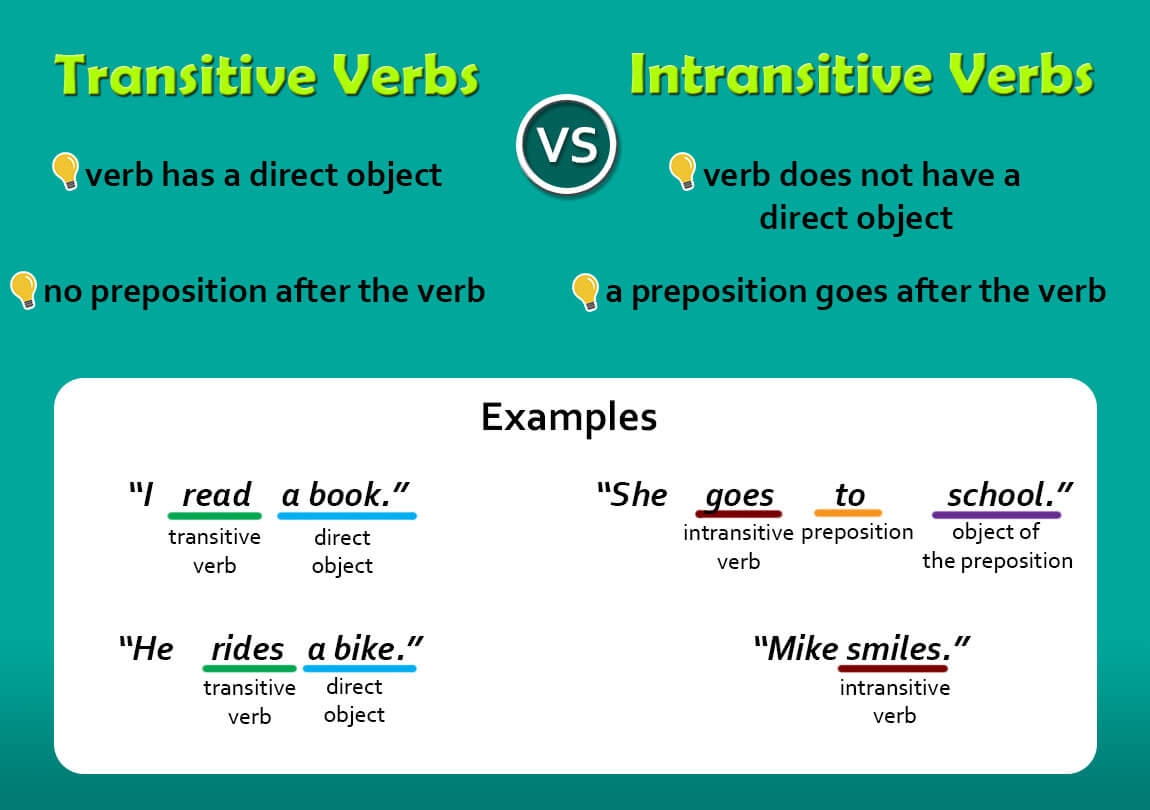Verbs are essential components of sentences, as they express actions or states of being. Understanding the difference between transitive and intransitive verbs is crucial in constructing grammatically correct sentences. Transitive verbs require a direct object to complete their meaning, while intransitive verbs do not.
Transitive verbs are verbs that require a direct object to complete their meaning. For example, in the sentence “She bought a book,” the verb “bought” is transitive because it requires a direct object (a book) to make sense. In contrast, intransitive verbs do not require a direct object. For example, in the sentence “He slept,” the verb “slept” is intransitive because it does not require a direct object.
Transitive and Intransitive Verbs Examples
1. Transitive verb example:
He ate a sandwich. (Ate is the transitive verb, and a sandwich is the direct object.)
2. Intransitive verb example:
The bird flew. (Flew is the intransitive verb, and there is no direct object.)
3. Transitive verb example:
She wrote a letter. (Wrote is the transitive verb, and a letter is the direct object.)
4. Intransitive verb example:
The sun set. (Set is the intransitive verb, and there is no direct object.)
5. Transitive verb example:
They built a house. (Built is the transitive verb, and a house is the direct object.)
Understanding the distinction between transitive and intransitive verbs is essential in constructing grammatically correct sentences. Using transitive verbs without a direct object or intransitive verbs with a direct object can lead to confusion and incorrect sentence structure. Practice identifying transitive and intransitive verbs in sentences to improve your understanding of their usage.
In conclusion, transitive verbs require a direct object to complete their meaning, while intransitive verbs do not. By recognizing the difference between transitive and intransitive verbs and practicing their usage in sentences, you can enhance your writing and communication skills. Remember to always include a direct object with transitive verbs to convey a clear and concise message.
